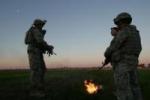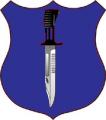Marc,
Here's how I understand it.
On the tactical level, when forces are attempting to secure terrain, decision making is pretty straightfoward and a commander just has to remind himself to seek advise, feedback, and recommendations from his subordinates (i.e. "huddle" method).
Once the area is secure, one starts working on the really complex problems (legitimacy of gov't, good governance, property rights, reconciliation, etc...) At this point, I believe the introduction of academics, NGOs, and other smart people into the planning process can assist the commander in finding better or least bad solutions outside of his/her expertise.
This type of design and decision making process is extremely helpful on the policy making level. One of the best examples that I've seen is the distribution of water rights in California. There are many stakeholders, every has a legitimate request, but there is simply a limited supply of water. Finding fair or appropriate solutions in this type of scenario requires something a bit broader than the Military Decision Making Process.
I think it is a good thing that we're relooking how we define and solve problems. I just hope that the final product is something junior leaders can easily absorb and use.
As for your example, my solution would be to have the governor removed; however, that COA is typically outside the boundaries of our operations. Additionally, I would add the it is the governments responsibility to provide legitimacy, not ours. My personal thought is that we can assist at security, but we can only provide limited assistance in the other factors of governance (at least in Iraq/Afghanistan). In the future, I think that the governments desire to be legitimate to it's people should be a criteria when we decide to conduct FID/SFA.
v/r
Mike







 ! At the same time, sometimes, I would suggest, the long term tactical solution is not the immediately optimal one. For example, setting up a long term "siege", complete with biometric ID stations and interface with local tribal elders, may prove better than moving into an area. Other times, leaving an area under OPFOR control may prove to be in your long term interests especially if the OPFOR has a nasty habit of beheading people.
! At the same time, sometimes, I would suggest, the long term tactical solution is not the immediately optimal one. For example, setting up a long term "siege", complete with biometric ID stations and interface with local tribal elders, may prove better than moving into an area. Other times, leaving an area under OPFOR control may prove to be in your long term interests especially if the OPFOR has a nasty habit of beheading people. ! As to it being outside of your COAs, hmmm, not in all cases. Even if you cannot get them removed, and you don't have the direct authority to remove them, it is still grist for the IO mill that can be bumped up to the appropriate level.
! As to it being outside of your COAs, hmmm, not in all cases. Even if you cannot get them removed, and you don't have the direct authority to remove them, it is still grist for the IO mill that can be bumped up to the appropriate level. .
.


Bookmarks